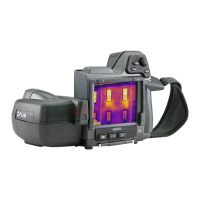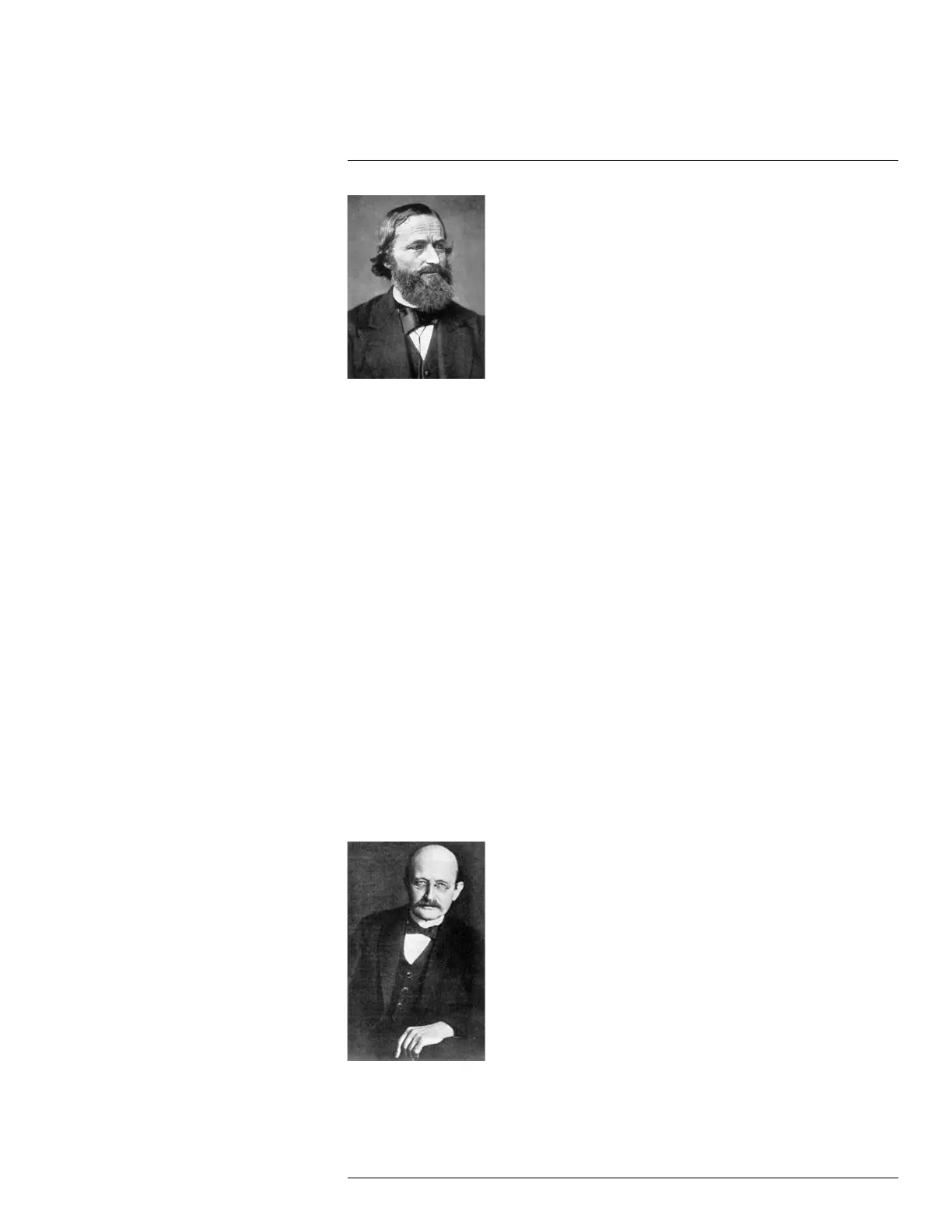Theory of thermography
34
Figure 34.2 Gustav Robert Kirchhoff (1824–1887)
The construction of a blackbody source is, in principle, very simple. The radiation charac-
teristics of an aperture in an isotherm cavity made of an opaque absorbing material repre-
sents almost exactly the properties of a blackbody. A practical application of the principle
to the construction of a perfect absorber of radiation consists of a box that is light tight ex-
cept for an aperture in one of the sides. Any radiation which then enters the hole is scat-
tered and absorbed by repeated reflections so only an infinitesimal fraction can possibly
escape. The blackness which is obtained at the aperture is nearly equal to a blackbody
and almost perfect for all wavelengths.
By providing such an isothermal cavity with a suitable heater it becomes what is termed a
cavity radiator. An isothermal cavity heated to a uniform temperature generates blackbody
radiation, the characteristics of which are determined solely by the temperature of the cav-
ity. Such cavity radiators are commonly used as sources of radiation in temperature refer-
ence standards in the laboratory for calibrating thermographic instruments, such as a
FLIR Systems camera for example.
If the temperature of blackbody radiation increases to more than 525°C (977°F), the
source begins to be visible so that it appears to the eye no longer black. This is the incipi-
ent red heat temperature of the radiator, which then becomes orange or yellow as the tem-
perature increases further. In fact, the definition of the so-called color temperature of an
object is the temperature to which a blackbody would have to be heated to have the same
appearance.
Now consider three expressions that describe the radiation emitted from a blackbody.
34.3.1 Planck’s law
Figure 34.3 Max Planck (1858–1947)
Max Planck (1858–1947) was able to describe the spectral distribution of the radiation
from a blackbody by means of the following formula:
#T559879; r. AO/35410/35410; en-US
183

